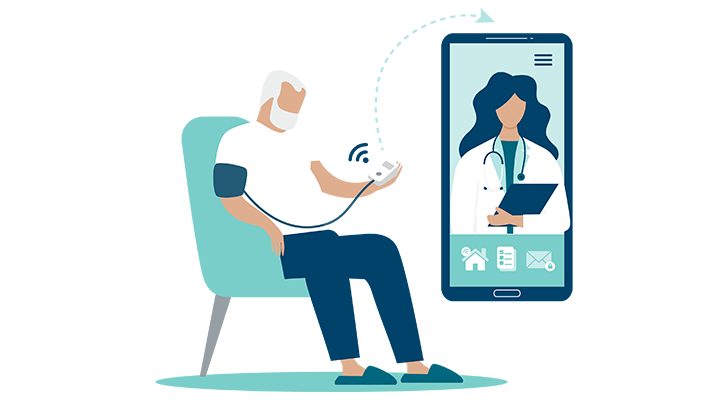Bots are now so ubiquitous they have become a part of daily life. Different technologies are attempting to deliver high-quality customer service at a previously unseen scale.
As the underlying AIs slowly develop into maturity, the nuanced complexity required to successfully negotiate interactions with customers is a challenge to create. Yet, as more interactions occur, the machines learn, and services improve. But do we want machines to take over? Do we want to lose that human touch?
The healthcare industry is a particularly contentious area for services like these. Breakthroughs in surgical procedures, treatments, and diagnoses are all welcomed, as they represent new tools in the medical professionals’ arsenal. They act in support of the specialists we rely on. AIs and med bots that could potentially replace key human-to-human interactions – that put our care wholly in the hands of machines – are less welcome.
A report from a recent study shows that already 56% of clinicians predict they will base most of their clinical decisions using tools that utilize artificial intelligence over the next 10 years.
Elsevier Health, Clinician of the Future: a 2022 report
The truth, as always, lies somewhere in between. Context and intent guide how these technologies can be best used to support the infrastructure, with healthcare professionals at the core. Let’s explore the chain of care and understand how these technologies can make a lasting, positive, sustainable impact.
Diagnosis and triage
One of the key bottlenecks in healthcare today is the initial contact, diagnoses, and intake of patients experiencing symptoms. The first step normally is to assess the severity of distress to the patient. Once that is clear, the healthcare professional can decide which facility they should visit. In the facility, triage is performed if necessary before an assessment is finalized and treatment is administered.
Each of these stages can be considered a step in the patient’s care journey. In determining the speed at which the patient receives the care, the key factor is access to trained medical personnel that can recommend the next appropriate course of action. This is essential to all professionals along the way: from on-site caregivers to telephone operators responding to emergency calls, to triage nurses at A&E centers. The less bandwidth they have, the longer the process takes.
Presently, simple chatbots and online forms that allow caregivers to submit the information that speeds up diagnosis are powerful ways to support key medical staff. The aim is to not rigidly follow protocol – the aim once again is to make quick decisions that lead to appropriate treatment. In the future, AI back-ends may support some of these steps. There are miles of red tape and years of development that need to be navigated before this becomes a reality. But, as of today, any tool that leads to quicker care is a welcome addition.

Administration and progression
One of the positive – and likely lasting – changes to come out of the Covid 19 -pandemic is the rapid adoption of new tools for remote care. What previously had to take place in the doctor’s office, can now be handled via video consultations, apps, and other digital communication channels.
This has indeed led to fewer face-to-face moments in healthcare. On the other hand, every physical visit a patient makes to a busy waiting room is sandwiched between commuting times. It makes sense to cut non-essential interactions in healthcare settings, both for visiting patients and the doctors who serve them.
As a result, more of the chain of care for each patient is now digitally connected. Every visit is now accompanied by the patient’s full medical history, allowing doctors to fully understand the treatment paths that led up to today’s visit – and the best course of future action. Patients can now book future slots at times that suit their schedules, and medical staff can focus more on the main value-driving actions of the job they love – providing quality care.

Monitoring and guidance
Another area where these technologies deliver value is the delivery of remote patient monitoring and guidance between scheduled healthcare visits. A medical professional only has so many hours in their day, and it is impractical to expect daily follow-up calls with every outpatient under their care.
For example, from the patient side, a simple questionnaire that asks them to report symptoms and provides simple guidance when things change can make a considerable difference in the effectiveness of treatments and recovery times. Regular monitoring leads to trend data, allowing for quicker medical interventions if baselines shift.
Something as simple as general advice on how oncology patients can combat nausea profoundly affects their overall well-being and attitude towards their treatment plans. It helps the patient and their caregivers to maintain the connection between visits, and it provides a much richer data set for doctors to plan the next steps.
Finally…
Technology is a tool. The key is to design tools that bring value to specific functions. In healthcare, this means supporting medical staff by removing bottlenecks that impede diagnosis and treatment. When these technologies are approached with this attitude, win-wins are created for patients and medical professionals alike.
